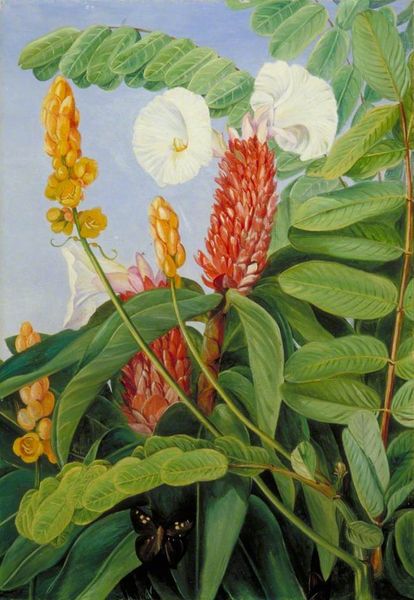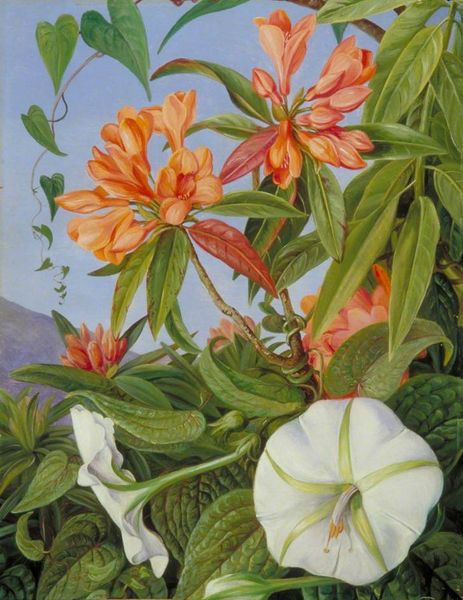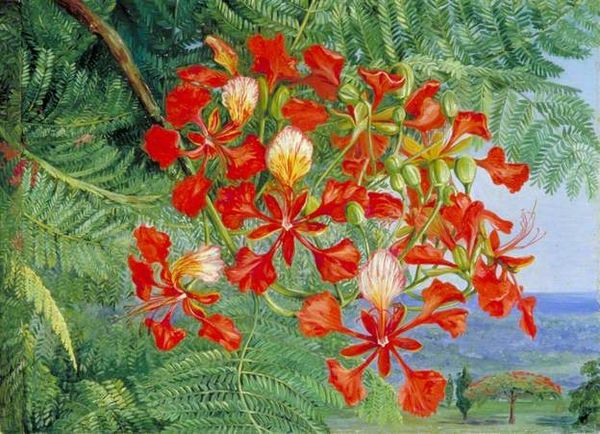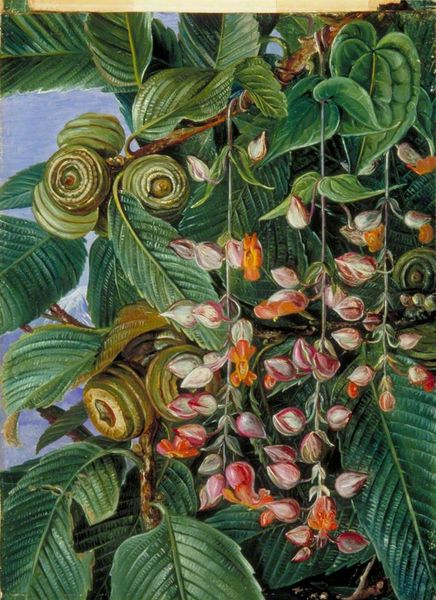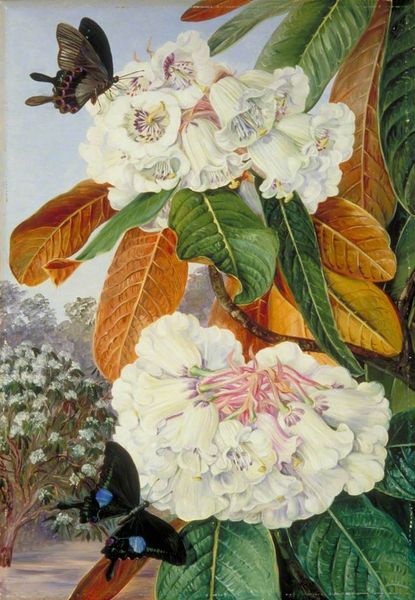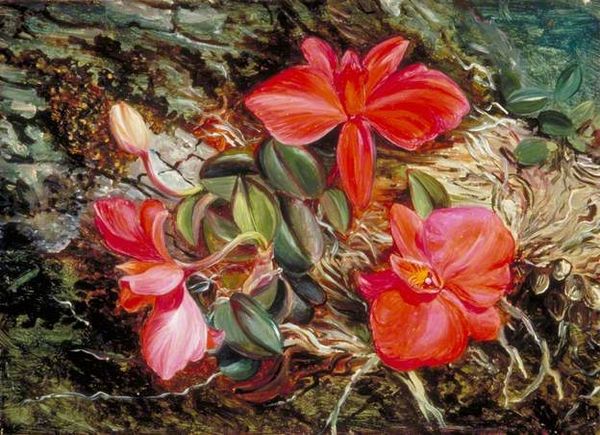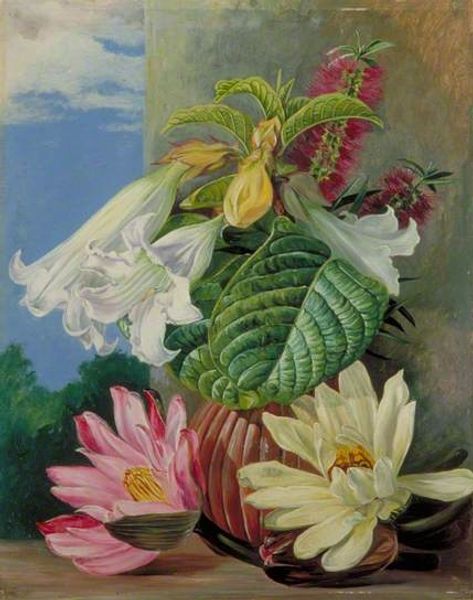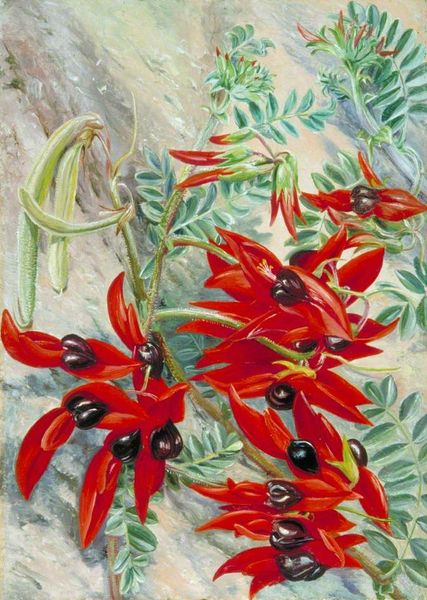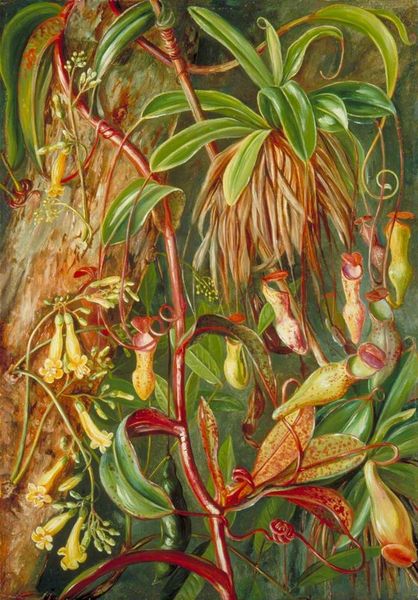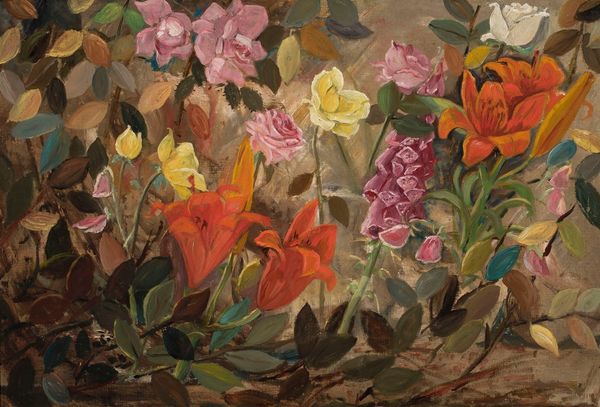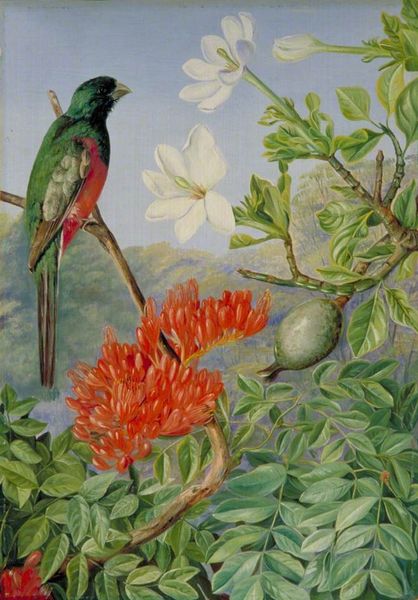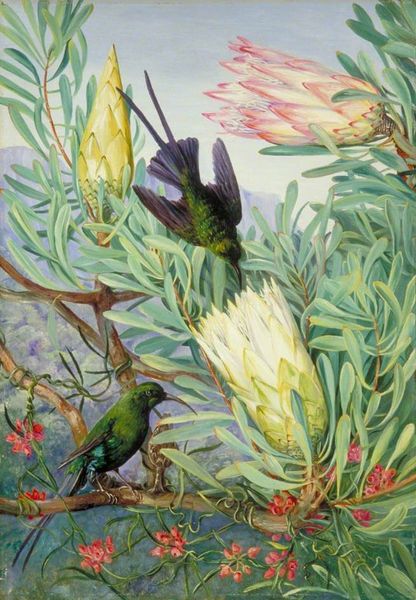
Copyright: Public domain
Editor: So, we're looking at "A Brazilian Climbing Shrub and Humming Birds," an oil painting from 1873 by Marianne North. It's so lush and vibrant! The painting just bursts with life, almost overwhelmingly so. What’s your initial read on it? Curator: It's interesting to consider North’s project as a whole. She traveled extensively, often independently, during a period when women had very limited social and professional mobility. Her botanical paintings, including this one, become records of a world largely inaccessible to her female contemporaries. The "natural" world, you see, was still viewed through a constructed social lens. Do you think she merely recorded or actively interpreted these environments? Editor: That’s a great question! I guess it's both, right? She meticulously captures the details of the flora and fauna, but also, the composition itself— the density of the foliage, the way the hummingbirds are almost hidden—creates a specific experience. What kind of politics are involved here? Curator: Consider the context of the British Empire during this time. Botanical art often served imperial ambitions, documenting and cataloging resources of colonized lands. Now, North funded her own travels and work, retaining ownership of her images and eventually gifting them to Kew Gardens. But, is she entirely separate from this history of botanical appropriation? The act of observing, classifying, and representing nature is, inevitably, imbued with power. Editor: So, even her independence doesn't necessarily divorce her from the politics of the era. I hadn't thought about it that way. Curator: Precisely. It raises fascinating questions about agency, representation, and the complex interplay between art, science, and empire. This image allows for discussing those topics. Editor: That makes me think differently about how art like this gets framed within institutions like Kew. Thanks, this gives me a lot to consider. Curator: It is also thanks to artists like Marianne North that museums like Kew Gardens can educate on this intersection of science and history, informing us of how perception dictates power.
Comments
No comments
Be the first to comment and join the conversation on the ultimate creative platform.
